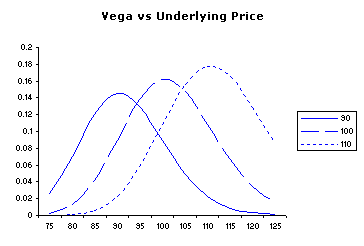Option vega strategies
By Simon Gleadall , CEO of Volcube. A vega-neutral trading strategy is any combination of options whose total vega is zero.
The vega of an option tells us how its value will change for a change in implied volatility. The vega of options that relate to the same underlying AND that share the same expiration date, are additive.
This means that all the vega from long option positions can be added and all the vega from the short option positions can be subtracted to give the total vega for that particular expiration. All options share the same underlying product and the same expiration date.
3 Best Strategies for Trading Rising Volatility
This portfolio is vega-neutral: To construct a vega-neutral option portfolio it is simply a matter of trading options long and short such that the sum of their vegas weighted by the number of lots of each position is zero, just as in the above example. Several of the most commonly traded option strategies are used or combined to create vega-neutral portfolios.
Option Strategy: Long Gamma, Short Vega - SPDR S&P Trust ETF (NYSEARCA:SPY) | Seeking Alpha
For example, a risk reversal out-of-the-money put versus out-of-the-money call can be a vega-neutral strategy if the put and call have the same vega. A call spread is very unlikely to be vega-neutral unless it is partially in-the-money , but a long call spread position could be rendered vega-neutral if coupled with another strategy selling options elsewhere in the right proportion.
If a strategy is delta -neutral, it should not make profits or losses for changes in the price of the underlying. A strategy that is vega-neutral should neither make nor lose money when implied volatility changes.
So how do traders look to profit from vega-neutral positions? There are several ways. One is to make markets in options and look to capture the bid-ask spread in implied volatility. For example, a trader may buy some options at one level of implied volatility and then sell other options at a higher level of implied volatility.
By executing these trades so that the position is overall vega-neutral, the trader is hoping to minimise his option-related risk until he is able to reverse out of the position. Another way to profit from a vega-neutral strategy is to play the skew. But he may have no view with respect to at-the-money volatility. In other words, he thinks the shape of the implied volatility curve is going to alter, rather than that the curve is going to shift upwards or downwards.
In this case, he may look to trade a vega-neutral risk-reversal. Remember, that not all vega is simply additive. Adding the vega of any options is only strictly valid if the implied volatility changes affecting the options are likely to be very similar.
For example, a ratio call spread made up of two options with similar strikes, struck on the same underlying and expiring at the same time, may well be genuinely vega-neutral. If the options in the spread have a different expiration date, then adding and subtracting raw vega numbers may be a misleading thing to do.
This is because implied volatility tends NOT to move identically across the term structure of options. For example, if the 3 month implied volatility rises, 6 month implied volatility may also rise; but not necessarily by the same amount.
It all depends on the degree of correlation between the implied volatilities of the options in question.
One adjustment that can be made for options on the same underlying but with different expirations, is to use a time-weighted vega. This makes the assumption that the implied volatilities across time for options on a single underlying will move in a way that is related to the time each option has until expiry.
Typically, the adjustment made involves the square root of time.
Option Volatility: Strategies and Volatility
There is certainly a case that a time-adjusted vega-neutral position that covers multiple expirations is more meaningful than the raw vega-neutral equivalent. But the time-adjusted vega is only as good as the assumptions it is built on. Many traders will look at both the raw vega and a time-adjusted vega as well as knowing their vega per month, in order to get the complete picture. You can access Volcube Starter Edition for FREE.
Options Pricing & The GreeksStarter Edition has been designed specifically for individuals who want to learn about options trading from home or at work. If you want to learn about options trading, try Volcube out for free today! Click here to get start your completely FREE trial. Products Volcube Starter Edition Volcube Pro Edition Testimonials Store Volcube simulators Ebook store Compare Volcube Resources Options articles Options ebooks Recommended reading Support Volcube Tutorials Options Trading FAQs Options Training About What is Volcube?
News Company Contact us.

What are vega-neutral trading strategies? How to profit from vega-neutral strategies If a strategy is delta -neutral, it should not make profits or losses for changes in the price of the underlying.
Vega-neutral option strategies across different expirations Remember, that not all vega is simply additive. FREE TRIALS of Volcube Starter Edition: Navigate Volcube Starter Edition Products Options articles About Support Terms and conditions Site Map Privacy and cookie policy.